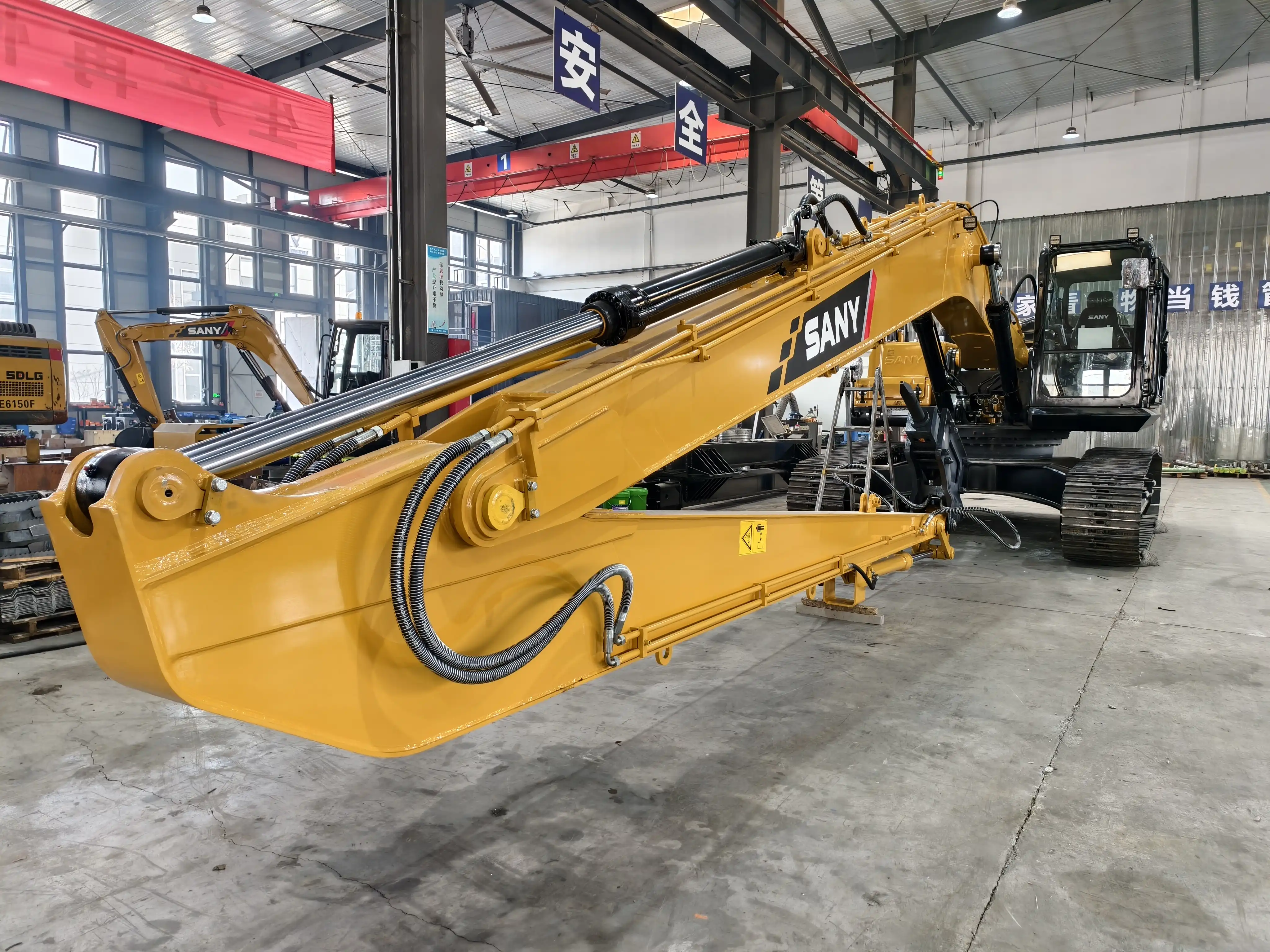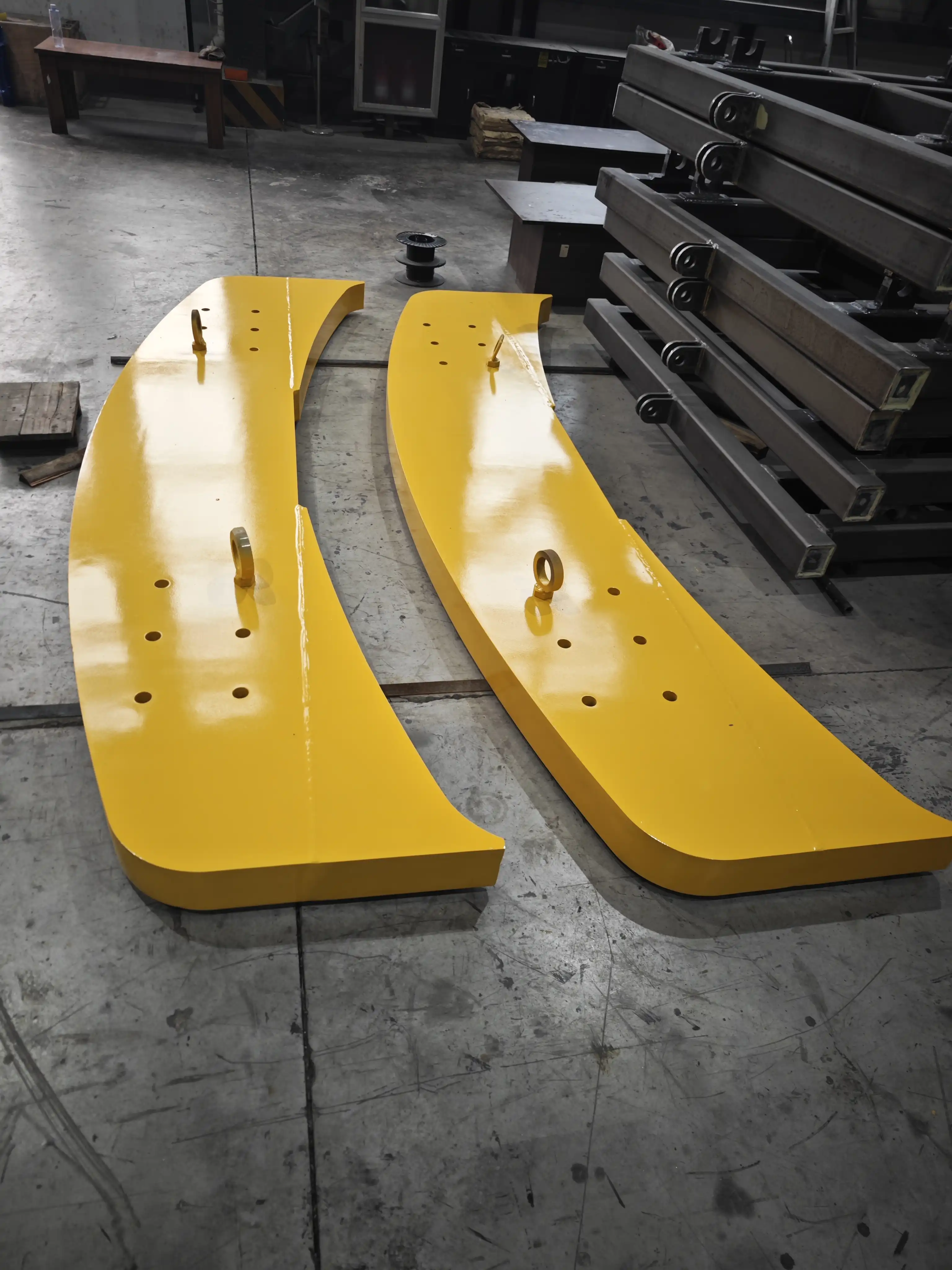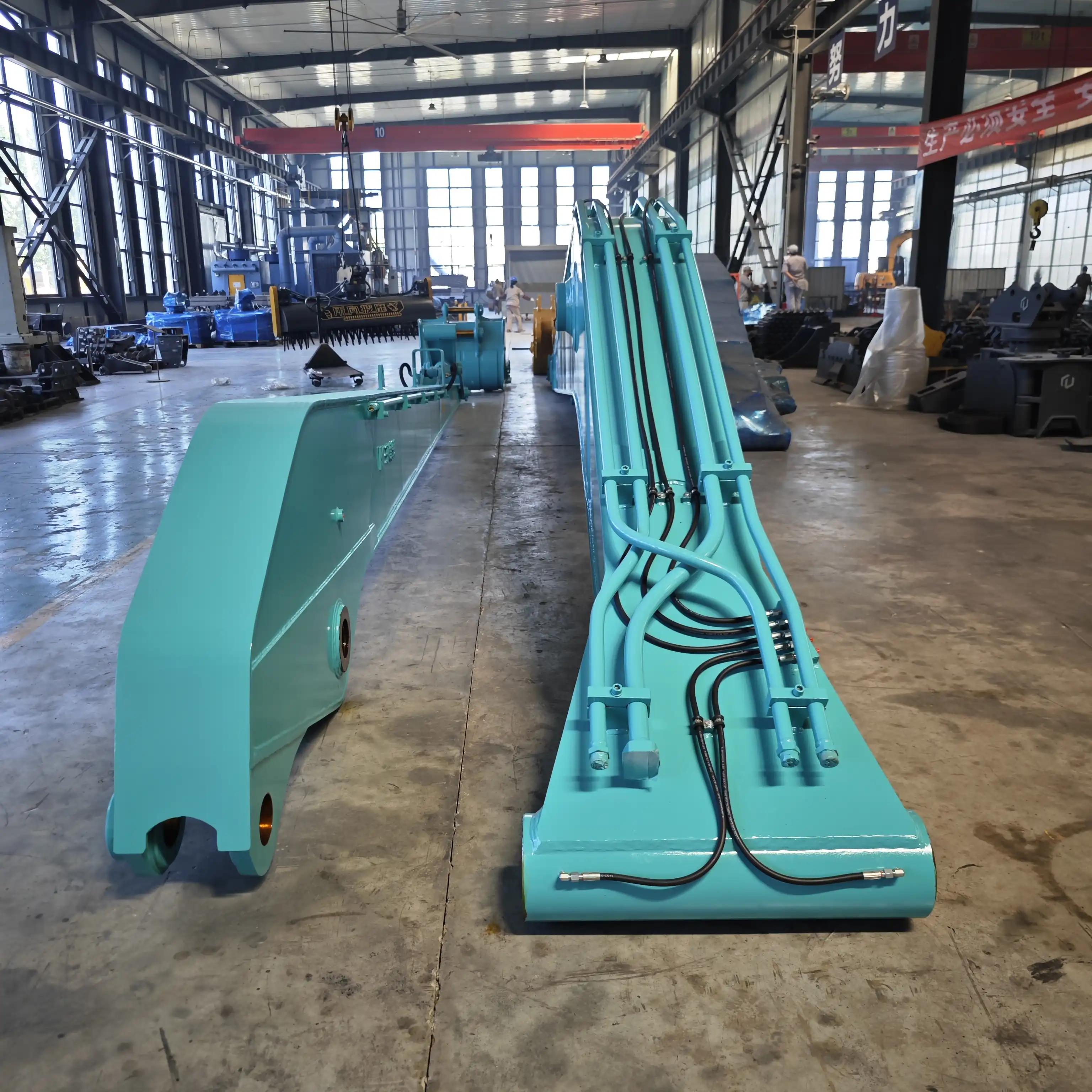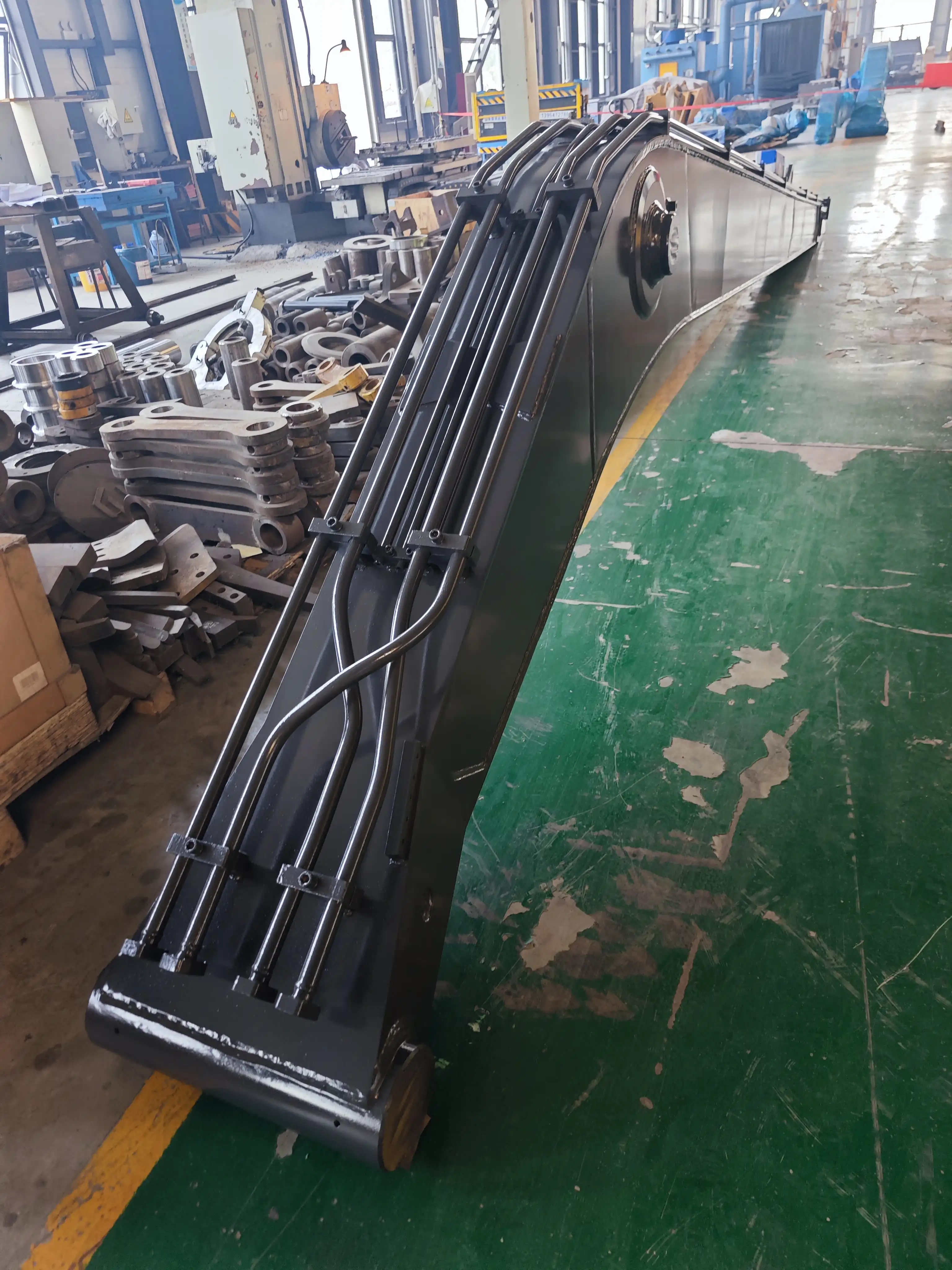What is the maximum reach of an excavator?
The maximum reach of an excavator varies significantly based on the machine's size and configuration. Standard excavators typically have a maximum reach of 26-32 feet (8-10 meters) for mid-sized models, while larger 30-40 ton excavators can reach approximately 36-40 feet (11-12 meters). However, specialized long arm excavator configurations dramatically extend these capabilities, with some models achieving reaches of over 55 feet (17 meters). These extended-reach machines are specifically engineered for applications requiring exceptional reach, such as deep water dredging, distant slope work, and hard-to-access excavation sites. The reach capabilities of long arms make them invaluable for projects where standard equipment simply cannot perform efficiently, offering solutions for complex challenges in railway construction, mining operations, and environmental management work requiring precision at a distance.
The Maximum Reach Of An Excavator: Type And Configuration

Standard Excavator Reach Capabilities
The reach of a standard excavator is primarily determined by its size classification and boom-arm configuration. Mini excavators, weighing between 1-6 tons, typically offer a maximum reach of 12-20 feet (3.5-6 meters), making them suitable for small-scale construction and landscaping projects where space is limited. Moving up to medium-sized excavators in the 10-25 ton range, the reach extends to approximately 26-32 feet (8-10 meters), providing greater versatility for general construction applications. Heavy-duty excavators weighing 30-40 tons can reach approximately 36-40 feet (11-12 meters), allowing them to handle larger commercial and industrial projects.
The standard boom and arm configuration consists of two main components: the boom (the longer section attached to the excavator body) and the arm (sometimes called the dipper stick, which connects the boom to the attachment). This two-piece design balances reach capabilities with digging force, offering good all-around performance for conventional excavation work.
Factors Affecting Maximum Reach
Several key factors influence the maximum reach an excavator can achieve:
Machine Size and Weight: Larger excavators generally provide greater reach due to their longer booms and arms, with the counterweight allowing for extended reach without compromising stability.
Boom and Arm Configuration: The length ratio between boom and arm dramatically affects reach capabilities, with different configurations optimized for either horizontal reach or digging depth.
Hydraulic System Capacity: Advanced hydraulic systems support the extended reach by providing sufficient power and precision control even at maximum extension points.
Counterweight Design: Properly engineered counterweights are essential for maintaining stability when working at maximum reach, preventing dangerous tipping scenarios.
Material Strength: High-tensile steel and advanced materials allow manufacturers to extend reach while maintaining structural integrity under load.
Specialized Reach Configurations
Beyond standard configurations, excavator manufacturers offer specialized reach configurations for specific applications. High-reach demolition excavators feature extended booms that can reach heights of 65-130 feet (20-40 meters), allowing operators to safely demolish tall structures from a distance. Telescopic boom excavators incorporate hydraulic extensions that can be adjusted on demand, offering versatility for varying reach requirements. Three-piece boom configurations provide enhanced maneuverability in confined spaces while maintaining good reach capabilities, making them ideal for urban construction sites.
Another important specialized configuration is the offset boom, which allows the boom to be hydraulically shifted left or right of center. This design enables excavating alongside obstacles or parallel to foundations while maintaining stability and reach. These specialized configurations highlight how modern excavator design continuously evolves to meet specific operational challenges across different industries.
Long-Reach Excavators

Defines a Long-Reach Excavator
A long reach arm excavator represents a specialized category of excavation equipment specifically engineered to provide exceptional reach beyond what standard excavators can achieve. The defining characteristic is an extended boom and arm assembly that significantly increases both horizontal reach and digging depth capabilities. These machines feature carefully redesigned hydraulic systems to maintain power at extended distances and enhanced counterweight configurations to ensure stability during operation at maximum extension.
The primary purpose of long arm excavators is to access work areas that would otherwise be impossible or unsafe to reach with conventional equipment. This includes dredging operations in deep water bodies, excavation across wide ditches or barriers, slope maintenance from stable ground positions, and environmental remediation in sensitive or difficult-to-access areas.
Tiannuo Machinery's specialized long reach excavators demonstrate these capabilities with impressive specifications: models designed for 20-25 ton base machines offer arm lengths of 16,000mm to 18,000mm, resulting in maximum reach capabilities of 15,300mm to 17,300mm depending on configuration. This extraordinary reach allows contractors to tackle challenging projects that would otherwise require multiple specialized pieces of equipment or extensive temporary works.
Applications That Demand Extended Reach
The exceptional reach capabilities of long arm excavators make them invaluable across numerous industries:
In railway construction and maintenance, these machines can access tracks and embankments from safe positions, reducing the need for track possession times and improving worker safety by allowing operations from stable ground away from live rail lines.
For waterway management, long-reach excavators excel at dredging operations, removing sediment and debris from canals, rivers, and lakes while operating from the bank rather than requiring floating platforms or temporary access roads.
Mining operations benefit from long-reach capabilities when creating stable benches and accessing difficult mine faces without requiring frequent repositioning of the machine. This improves both efficiency and safety in challenging extraction environments.
Environmental restoration projects often involve working in sensitive ecosystems where minimizing ground disturbance is critical. Long-reach excavators allow operators to work from established access points while still reaching remote areas for habitat creation or contamination remediation.
Slope stabilization work represents another key application, as these machines can reshape and reinforce embankments from stable positions at the top or bottom of slopes, eliminating the need for operators to work on unstable ground.
Reach at Ground Level vs. Digging Depth

Understanding Different Reach Measurements
When evaluating excavator capabilities, particularly those of long reach excavators, it's essential to understand the distinction between different reach measurements. Maximum horizontal reach refers to the furthest distance an excavator can extend its bucket horizontally from the center of rotation, typically measured at ground level. This measurement is critical for applications requiring work across obstacles or barriers, such as dredging operations from shore.
Maximum digging depth indicates how far below the ground level the excavator can effectively excavate. For Tiannuo's long arm excavators, this impressive capability ranges from 11,200mm to 12,200mm depending on configuration, making them ideal for deep foundation work, utility installation, and subsurface remediation projects.
Maximum excavation height represents the highest point the bucket can reach above ground level, with Tiannuo's models achieving 13,500mm to 15,300mm. This specification is particularly important for loading operations involving high-sided trucks or for clearing vegetation at elevated positions.
Minimum front-end turning radius (4,750mm to 5,150mm for Tiannuo models) indicates how close to the machine itself the boom and arm assembly can operate effectively. A smaller radius improves versatility in confined spaces despite the extended reach capabilities.
Maximum dumping height (11,500mm to 12,200mm) determines how high the excavator can lift and discharge material, critical for efficient loading operations with large haul trucks or hoppers.
Operational Considerations for Maximum Effectiveness
Working at maximum reach requires careful planning and execution to maintain both productivity and safety. Operators must first establish stable positioning on level, compacted ground, ensuring the tracks or outriggers provide optimal support before extending to maximum reach positions. Machine stability becomes increasingly critical as the boom extends outward, with operators needing to continuously monitor ground conditions and machine feedback.
Load management strategies are essential when working at maximum extension. The lifting capacity of any excavator decreases significantly as the distance from the machine increases, following a non-linear relationship that operators must understand and respect. Tiannuo's advanced hydraulic systems help maintain precision control even at maximum reach, but operators must adjust their expectations regarding cycle times and bucket capacities when working at extreme extensions.
Planning excavation sequences to minimize repositioning requirements improves efficiency when working with long arm excavators. By systematically working in sectors that maximize the utilization of the extended reach capabilities, operators can significantly reduce the time spent moving the base machine, leading to improved project timelines and reduced fuel consumption.
Comparing Standard vs. Long-Reach Performance Metrics
When evaluating standard excavators against long arm excavators, several key performance metrics highlight the tradeoffs between these different configurations. Reach capability represents the most obvious difference, with long-reach models offering approximately 1.5-2 times the horizontal reach of standard configurations in the same weight class. Tiannuo's specialized long reach excavators demonstrate this advantage with reach capabilities of 15,300mm to 17,300mm, far exceeding standard excavator limitations.
Digging force typically decreases in long-reach configurations due to the extended leverage distances involved. However, advanced hydraulic systems in modern long-reach excavators help mitigate this reduction, maintaining adequate digging power for most applications despite the extended reach.
Stability considerations differ significantly between standard and long-reach configurations. Long-reach models feature enhanced counterweight systems and may incorporate wider undercarriages or extended outriggers to maintain stability at maximum extension. Operators must account for these different stability profiles when transitioning between standard and long-reach equipment.
Productivity comparisons reveal that while long-reach excavators may have somewhat slower cycle times due to the extended distances, they often achieve greater overall efficiency by eliminating the need for temporary access structures, multiple machine deployments, or frequent repositioning. For applications requiring extended reach, the specialized capabilities of long-reach excavators typically deliver superior project economics despite the higher initial equipment investment.
FAQ
①What is the typical maximum reach of a standard excavator?
Standard mid-sized excavators (15-25 tons) typically have a maximum horizontal reach of 26-32 feet (8-10 meters), while larger 30-40 ton excavators can reach approximately 36-40 feet (11-12 meters) depending on the manufacturer and specific model configuration.
②How does a long arm excavator extend reach beyond standard models?
Long arm excavators utilize specially engineered booms and arms that are significantly longer than standard configurations, coupled with enhanced hydraulic systems and counterweights to maintain stability. This specialized design allows Tiannuo's long arm excavators to achieve maximum reach capabilities of 15,300mm to 17,300mm (50-56 feet).
③What applications benefit most from extended reach excavators?
Extended reach excavators excel in applications such as river and lake dredging, slope stabilization, railway maintenance, environmental remediation, and any project requiring access to areas that would otherwise be difficult or impossible to reach with standard equipment or would require building temporary access structures.
④Are there stability concerns when operating at maximum reach?
Yes, stability is a critical consideration when operating at maximum reach. Modern long arm excavators incorporate enhanced counterweight systems, wider tracks, and advanced hydraulic controls to maintain stability. Operators must always work on level, stable ground and follow manufacturer guidelines regarding load capacities at different extension points.
⑤How does maximum digging depth compare to horizontal reach?
While related, these measurements represent different capabilities. Tiannuo's long arm excavators offer maximum digging depths of 11,200mm to 12,200mm alongside maximum horizontal reaches of 15,300mm to 17,300mm. The ratio between depth and reach depends on the specific boom and arm configuration, with some designs optimized for depth and others for horizontal extension.
Excavator reach capabilities continue to evolve with technological advancements, providing solutions for increasingly complex construction and excavation challenges. For industries requiring exceptional reach capabilities, specialized long arm excavators offer a combination of performance, safety, and efficiency that standard equipment simply cannot match. If your project demands extended reach capabilities, exploring customized solutions from experienced manufacturers like Tiannuo Machinery can unlock new possibilities for your operations. For more information about specialized excavator solutions tailored to your specific requirements, contact our team at raymiao@stnd-machinery.com.
References

Construction Equipment Guide. "Understanding Excavator Reach Specifications: A Comprehensive Guide for Project Planning," Journal of Construction Technology, 2023.
International Association of Heavy Equipment Operators. "Comparative Analysis of Standard vs. Long-Reach Excavator Performance in Diverse Applications," 2024.
Institute of Construction Engineering. "Advancements in Hydraulic Systems for Extended Reach Excavation Equipment," Engineering Technology Review, 2023.
Journal of Construction Machinery. "Safety Considerations and Best Practices for Operating Long Arm Excavators at Maximum Extension," Vol. 18, 2024.
Global Construction Equipment Research Center. "Evolution of Materials Technology in Modern Excavator Boom and Arm Design," Materials Science in Construction, 2023.
About Author: Arm
Arm is a leading expert in the field of specialized construction and railway maintenance equipment, working at Tiannuo Company.

